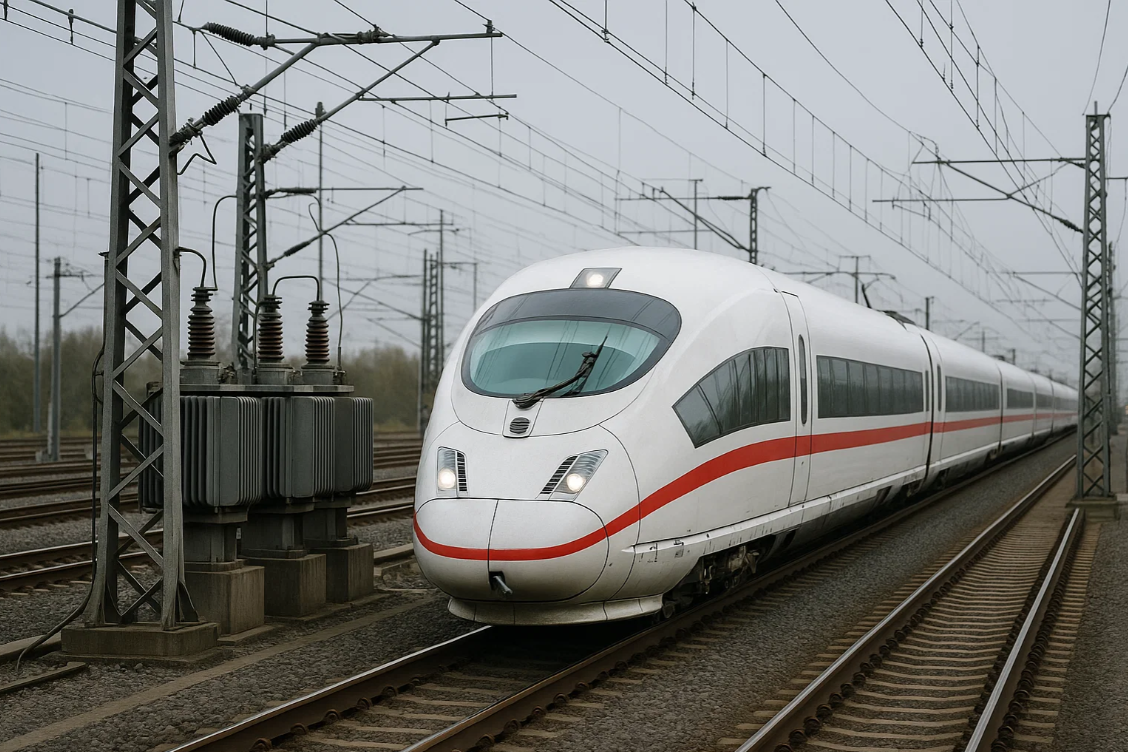
In the daily operation of railway systems, transformers are one of the core components that ensure the stable supply of electricity. As the electrification of railways accelerates, especially with the expansion of high-speed rail and urban rail transit, the performance and application demands of transformers are increasing. This article will explore the practical applications and challenges faced by transformers in the daily operation of railways, focusing on power quality, smart scheduling, the future development of rail transport, and energy management.
In railway systems, especially high-speed rail and urban rail transit, the quality of electricity directly impacts train operations and passenger experience. Transformers are not just devices for converting voltage; they also play a crucial role in regulating current, suppressing power fluctuations, and eliminating harmonics.
For example, during peak hours, the electrical load on railway systems fluctuates significantly. In such cases, transformers automatically adjust the voltage to prevent overloads or voltage instability, which can cause equipment failure. Power system harmonics can also interfere with traction equipment and affect train performance. To address this, modern railway transformers often incorporate harmonic suppression technology to ensure the stability of power transmission, preventing disruptions to train operations.
As urban rail transit, such as subways and light rail, expands rapidly, the role of transformers in these systems has become more critical. Unlike traditional railway systems, urban rail transit needs to handle more complex electricity demands and dynamic operating environments.
For instance, in metro systems, electricity supply must account for frequent train starts and stops, leading to load variations. Transformers not only need to respond quickly to voltage changes but must also ensure stable operation under high-load conditions. To meet these needs, modern transformers are often equipped with load adjustment and automated monitoring functions, enabling real-time adjustments to power output and preventing overload or power shortages.
Intelligent and automated scheduling systems have become indispensable in modern railway systems, particularly for efficient power dispatch and energy management, which ensure smooth train operations. Transformers play a key role in this process.
For example, smart transformers continuously monitor power load, temperature, and fault data, transmitting real-time information to central control systems. This enables the scheduling system to make timely adjustments based on real-time data, reducing energy waste and preventing power interruptions. Additionally, the integration of transformers with energy storage systems provides backup during peak energy demands, ensuring that the system can handle high loads without failure.
In recent years, more and more railway lines have become electrified, particularly in high-speed and rapid transit systems, where electric traction has become the primary mode of propulsion. The demand for transformers goes beyond simple voltage conversion; it also requires high load capacity, efficiency, and adaptability to the grid.
Electric railways require transformers that can adapt to different regional grid conditions and provide stable power supply without affecting train operations. For instance, high-speed rail lines often cross multiple regions where voltage levels and frequencies differ. In such cases, transformers must be able to accommodate these variations, ensuring smooth power delivery and supporting uninterrupted train service.
With increasing energy demands in railway systems, especially during peak hours, the pressure on traditional power grids is rising. As a result, energy storage technologies are being incorporated into railway systems to balance load and reduce energy demand fluctuations. In this process, transformers play a vital role.
In high-speed and urban rail transit systems, transformers collaborate with energy storage systems to charge during periods of low demand and discharge during peak periods, alleviating the strain on the grid. This collaboration not only reduces energy consumption in railway power systems but also provides backup power during unexpected outages, ensuring uninterrupted train operations.
In the daily operation of railways, transformers play a far more significant role than just power conversion. They are foundational in ensuring power quality, system stability, and reliable operation, while also collaborating with smart scheduling systems and energy storage technologies to meet complex energy demands. As the electrification of rail transport continues, the technological advancements and optimization of transformers will further enhance the safety, efficiency, and sustainability of railway systems.
As a leading manufacturer of transformers and energy management equipment, we provide efficient, safe, and intelligent solutions to support the global railway system with reliable and energy-efficient power. If you are looking for a partner to enhance the performance and safety of your power systems, we invite you to contact us and work together to drive the smart and green development of rail transport.
1.Types of High Voltage Switchgear The main categories of high voltage switchgear include Air-Insula...
View More1. Working Principle Oil-immersed transformers play a pivotal role in modern electrical power system...
View More1. Advantages of Distribution Dry Type Transformers Distribution dry type transformers have become i...
View More